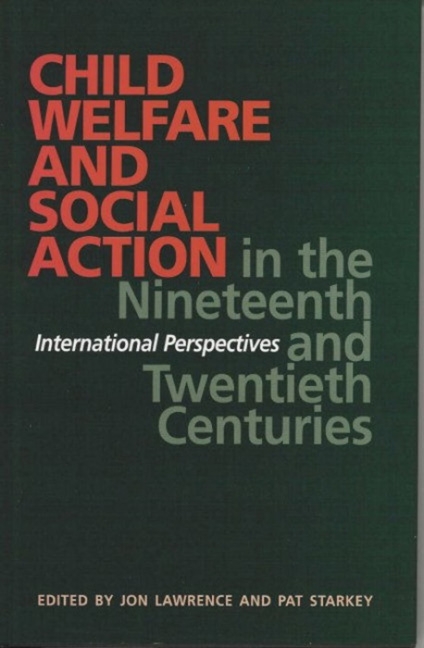Book contents
- Frontmatter
- Contents
- Acknowledgements
- Introduction: Child Welfare and Social Action
- I Gender and ‘Delinquency’
- II Child Emigration
- III Rethinking Philanthropy
- IV ‘Welfare States’ and Child Welfare
- 10 ‘Fixing’ Mothers: Child Welfare and Compulsory Sterilisation in the American Midwest, 1925–1945
- 11 A Spirit of ‘Friendly Rivalry’? Voluntary Societies and the Formation of Post-War Child Welfare Legislation in Britain
- 12 Mental Incapacity, Ill-Health and Poverty: Family Failure in Post-War Britain
- Notes on Contributors
- Index
10 - ‘Fixing’ Mothers: Child Welfare and Compulsory Sterilisation in the American Midwest, 1925–1945
from IV - ‘Welfare States’ and Child Welfare
- Frontmatter
- Contents
- Acknowledgements
- Introduction: Child Welfare and Social Action
- I Gender and ‘Delinquency’
- II Child Emigration
- III Rethinking Philanthropy
- IV ‘Welfare States’ and Child Welfare
- 10 ‘Fixing’ Mothers: Child Welfare and Compulsory Sterilisation in the American Midwest, 1925–1945
- 11 A Spirit of ‘Friendly Rivalry’? Voluntary Societies and the Formation of Post-War Child Welfare Legislation in Britain
- 12 Mental Incapacity, Ill-Health and Poverty: Family Failure in Post-War Britain
- Notes on Contributors
- Index
Summary
For most of the twentieth century, child welfare policy in the United States focused on fixing parents, especially mothers. For the most part, this meant providing education and training, instead of resources, to impoverished parents. To combat infant and maternal mortality, for example, the 1921 Sheppard-Towner Act provided education in hygiene and nutrition, but no medical care or financial assistance. The 1935 Social Security Act, which guaranteed financial assistance to needy families through Aid to Dependent Children, permitted states to supervise housekeeping practices and to limit welfare payments to mothers who had a ‘suitable home’. Even in the 1960s, in the midst of President Lyndon Johnson's War on Poverty, greater emphasis was placed on education and individual rehabilitation than on economic support for poor families.
Government efforts to ‘fix’ parents were not limited to education, however. Compulsory sterilisation, although far from routine, was an integral part of American health and welfare policy for much of the twentieth century. Numerous activists and scholars have commented on the connections between sterilisation and welfare, but most studies have focused on the 1960s and 1970s, when a grassroots movement and several highly publicised lawsuits brought about federal guidelines that halted the most flagrant abuses. Little attention has been paid to the period before the Second World War – although 30 American states permitted the compulsory sterilisation of the insane or feebleminded, and at least 38,000 persons had been surgically sterilised by 1941. These early state sterilisation programmes, while legally justified on eugenic grounds, served several purposes – reducing the perceived burden on the public purse being foremost among them. The disproportionate number of sterilisations among young women was due in large measure to such fiscal concerns.
This chapter focuses on the state of Minnesota to examine the place of ‘eugenic’ sterilisation in the history of American welfare. Located in the upper midwest near the Canadian border, Minnesota is a useful site for a case study because of its relatively homogeneous population and liberal reputation. Unlike studies which emphasise the racist motivations and ‘Nazi connections’ of American sterilisation supporters, Minnesota's history tells a more mundane tale of fiscal politics and family woes. The physicians and social workers who ran the state's sterilisation programme saw it as a humane and progressive social welfare measure. They rarely authorised operations over the objections of family members and did not sterilise very young children.
- Type
- Chapter
- Information
- Publisher: Liverpool University PressPrint publication year: 2001



